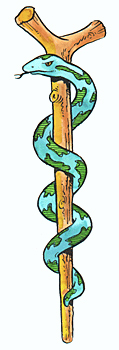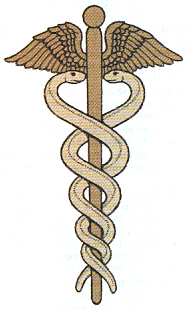serpe-, serpen-, serpent-, serpenti-
(Latin: creeping, to creep; a creeping thing; snake, snakes; serpent, serpents)
When crossing the Pacific Ocean, Captain Smith of the ship pointed out Serpens in the sky which was clearly visible with a telescope.
The skull of snake-serpents has movable quadrate bones and the two halves of the lower jaw are united by an elastic ligament enabling the mouth to be opened very wide.
2. When capitalized, the dried roots and rhizome of any of various species used as a bitter tonic: The fibrous aromatic root of the Virginia snakeroot or "Aristolochia Serpentaria" is known as Serpentaria or a serpentary-root.
Most species serpentiforms are nonvenomous and those that do have venom use it primarily to kill and subdue prey more than for self-defense. Some possess venom potent enough to cause painful injury or death to humans.
Nonvenomous serpentiforms either swallow their prey alive or kill them by constriction in which it initially strikes at its prey and holds on to it, pulling the victim into its coils or, in the case of very large prey, pulling itself onto the creature; then the serpentiform will wrap one or two coils around the captured animal.
People were amazed at the serpentine movements of the dancers on the dance floor.
The politician's explanations were even more serpentine than usual; that is, more complicated and difficult to follow.
As an English word, the adjective serpentine more often has a reference to the movements of snakes than to the snakes themselves.
2. A snake-house, a place where they are kept or a place inhabited by vipers: The school children were fascinated by the serpentry when they visited the reptile exhibit at the zoo.
3. A winding or sinuous motion or any act or motion of a snake-like creature; such as, slithering, climbing, eating, drinking, killing, sleeping, or constricting (squeezing): As a child, Joyce was horrified to watch the serpentry of a python that was squeezing a rabbit when she visited the zoo.
Adam had a serpiginous or creeping ulcer which was slowly extending from one area of his skin while healing in another region.
2. Etymology: from Latin serpigo, setrpiginis; from Latin serpere, "to creep, a creeping" + -ous, "full of, abounding in".After Jim peeled back the bark of the dying tree, he could see the calcareous (calcium) tubes in which the Serpulae lived.
The reproduction of snakes are oviparous (egg-laying and hatching outside the body) or ovoviviparous (producing living young from eggs that hatch within the body).
Why are snakes sometimes called "serpents"? Because they creep or sneak around; as indicated by the Latin origin serpere, serpens, "to creep".
2. A treacherous person who is cold-blooded: Alan's cousin was considered to be a snake in the grass and untrustworthy.There are those who are considered to be snakes because they exploit their positions of trust in order to betray other people.
Throughout the centuries, people have had various responses to snakes.





The above images represent medical organizations based on the Greek god Aesculapias who healed people.
More information about the medical relationships to snakes is located in the two sections about Aesculapias.

Then there are those who really like snakes OR have a severe fear of them; as illustrated in the above image.
